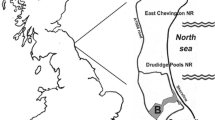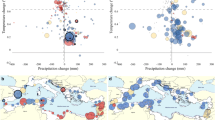Abstract
Andean high-altitude wetlands are important ecosystems that serve a range of social-ecological functions. In the Andes, bofedales, a specific type of peat-producing wetland, are essential for the sustainability of mountain ecosystems and indigenous pastoralist communities. The Chucuyo bofedal in northern Chile is affected by climatic variability and water extraction for agricultural uses via the Lauca canal. Herders in the local community also actively manage this wetland according to their traditional ecological knowledge to ensure permanent fodder for their animals. In this article, we analyze the annual behavior of the Chucuyo bofedal after the wet season. Based on precipitation data, extracted water flows, vegetation vigor from satellite images, and an ethnographic approach, we determined that the bofedal’s productivity was negatively correlated with the amount of precipitation and positively correlated with the surface area of the wetland. However, water extraction via the Lauca channel had no significant relationship with either surface area or vegetation vigor. We identify community practices and traditional ecological knowledge as key elements in the maintenance of these ecosystems. This situation is critical in the context of an aging population and the current pattern of migration out of the region to urban areas. The results provide substantial empirical evidence for future decision-making regarding the conservation of these ecosystems.
Similar content being viewed by others
References
Anderson TG, Christie DA, Chávez RO, et al. (2021) Spatiotemporal peatland productivity and climate relationships across the western South American Altiplano. J Geophys Res-Biogeo 126: e2020JG005994. https://doi.org/10.1029/2020JG005994
Babidge S, Kalazich F, Prieto M, et al. (2019) “That’s the problem with that lake; it changes sides”: mapping extraction and ecological exhaustion in the Atacama. J Pol Ecol 26(1): 738–760. https://doi.org/10.2458/v26i1.23169
Baldassini P, Volante JN, Califano LM, et al. (2012) Regional characterization of the structure and productivity of the vegetation of the Puna using MODIS images. Austral Ecology 22: 22–32. (In Spanish)
Buytaert W, Cuesta-Camacho F, Tobón C (2011) Potential impacts of climate change on the environmental services of humid tropical alpine regions. Global Ecol Biogeogr 20(1): 19–33. https://doi.org/10.0487/j.1466-8238.2010.00585.x
Capriles JM, Tripcevich N (2016) The Archaeology of Andean pastoralism. University of New Mexico Press, Albuquerque, USA.
Casagranda E, Navarro C, Grau HR, et al. (2019) Interannual lake fluctuations in the Argentine Puna: Relationships with its associated peatlands and climate change. Reg Environ Change 19: 1737–1750. https://doi.org/10.1007/s10113-019-01514-7
Castro M, Bahamondes M (1998) Grazing areas and circuits and cultural aspects. Cadastral and cartographic identification of Aymara indigenous community and patrimonial lands, and identification, study and proposal of conflict coalition over them in the provinces of Arica and Parinacota. Agreement CIDER Ltda. CONADI, Arica. (In Spanish)
Chávez RO, Christie DA, Olea M, et al. (2019) A multiscale productivity assessment of high Andean peatlands across the Chilean Altiplano using 31 years of landsat imagery. Remote Sens-Basel 11(24): 2955. https://doi.org/10.3390/rs11242955
Dangles O, Rabatel A, Kraemer M, et al. (2017) Ecosystem sentinels for climate change? Evidence of wetland cover changes over the last 30 years in the tropical Andes. PLoS ONE 12: e0175814. https://doi.org/10.1371/journal.pone.0175814
Dorador C, Vila I, Witzel KP, et al. (2013) Bacterial and archaeal diversity in high altitude wetlands of the Chilean Altiplano. Fund Appl Limnol 182(2): 135–159. https://doi.org/10.1127/1863-9135/2013/0393
Garcia E, Otto M (2015) Ecohydrological characterization of high Andean wetlands using multitemporal satellite images in the headwaters of the Santa River basin, Ancash, Peru. Appl Ecol 14(2): 115–125. (In Spanish)
García CL, Teich I, Gonzalez-Roglich M, et al. (2019) Land degradation assessment in the Argentinean Puna: Comparing expert knowledge with satellite-derived information. Environ Sci Policy 91: 70–80. https://doi.org/10.1016/j.envsci.2018.10.018
González H (2007) Rural Community in Crisis or Translocalized Community among the Aymara of Northern Chile. VI Chilean Congress of Anthropology, College of Anthropologists of Chile, Valdivia. (In Spanish)
González S, Ross C, Ovando C (2016) The Lauca River issue from a multi-scale perspective: a zero-sum game of Bolivian and Chilean diplomacy? Andean Dialogue. J Andean Hist, Geogr and Cul 51:57–72. (In Spanish) https://doi.org/10.4067/S0719-26812016000300057
Guijarro JA (2016) Package “climatol” climate tools (Series Homogenization and Derived Products). Available online at: https://CRAN.R-project.org/package=climatol (accessed on 6 February 2017)
Guo B, Zhou Y, Wang SX, et al. (2014) The relationship between NDVI and climate factors in the semi-arid region: A case study in Yalu Tsangpo River basin of Qinghai-Tibet Plateau. J Mt Sci 11(4): 926–940. https://doi.org/10.1007/s11629-013-2902-3
Hribljan JA, Cooper DJ, Sueltenfuss J, et al. (2015) Carbon storage and long-term rate of accumulation in high-altitude Andean peatlands of Bolivia. Mires Peat 15: article 12.
Lane K (2014) Water Technology in the Andes. In: Selin H (eds) Encyclopaedia of the History of Science, Technology, and Medicine in Non-Western Cultures. Springer, Dordrecht, Netherlands. https://doi.org/10.1007/978-94-007-3934-5_10182-1
Meseguer-Ruiz O, Ponce-Philimon PI, Quispe-Jofré AS, et al. (2018) Spatial behaviour of daily observed extreme temperatures in Northern Chile (1966–2015): data quality, warming trends, and its orographic and latitudinal effects. Stoch Env Res Risk A 32: 3503–3523. https://doi.org/10.1007/s00477-018-1557-6
Meseguer-Ruiz O, Ponce-Philimon PI, Guijarro JA, et al. (2019) Spatial distribution and trends of different precipitation variability indices based on daily data in Northern Chile between 1966 and 2015. Int J Climatol 39: 4595–4610. https://doi.org/10.1002/joc.6089
Meseguer-Ruiz O, Cortesi N, Guijarro JA, et al. (2020) Weather regimes linked to daily precipitation anomalies in Northern Chile. Atmos Res 236: 104802. https://doi.org/10.1016/j.atmosres.2019.104802
Otto M, Gibbons RE (2017) Potential effects of projected decrease in annual rainfall on spatial distribution of high Andean wetlands in Southern Peru. Wetlands 37: 647–659. https://doi.org/10.1007/s13157-017-0896-2
Orlove B (1977) Alpacas, Sheep, and Men: The Wool Export Economy and Regional Society in Southern Peru. Academic Press, New York, USA.
Orlove BS, Chiang JCH, Cane MA (2002) Ethnoclimatology in the Andes: a cross-disciplinary study uncovers a scientific basis for the scheme Andean potato farmers traditionally use to predict the coming rains. Am Sci 90: 428–435.
Palacios F (1977) Irrigated pastures for alpacas. In: Flores JA (ed.), Puna herders: Uywamichiq Punarunakuna. Peruvian Studies Institute, Lima, Peru. pp 155–170. (In Spanish)
Prieto M (2015) Privatizing water in the Chilean Andes: The case of Las Vegas de Chiu-Chiu. Mt Res Dev 35(3): 220–229. https://doi.org/10.1659/MRD-JOURNAL-D-14-00033.1
Rouse JW, Haas RH, Schell JA, et al. (1974) Monitoring vegetation systems in the Great Plains with ERTS. In: Freden SC, Mercanti EP and Becker M (eds.), Third Earth Resources Technology Satellite-1 Symposium. Volume I: Technical Presentations. NASA SP-351, NASA, Washnigton, USA. pp 309–317.
Sarricolea P, Romero H (2015) Observed and expected climate variability and changes in the Altiplano of Northern Chile. Rev Geog Norte Gd 62: 169–183. https://doi.org/10.4067/S0718-34022015000300010
Sarricolea P, Meseguer-Ruiz O, Romero-Aravena H (2017a) Precipitation trends in the Norte Grande of Chile and their relationship with climate change projections. Andean Dialogue. J Andean Hist, Geogr and Cult 54: 41–50.(In Spanish) https://doi.org/10.4067/S0719-26812017000300041
Sarricolea P, Herrera-Ossandon MJ, Meseguer-Ruiz O (2017b) Climatic regionalisation of continental Chile. J Maps 13(2): 66–73. https://doi.org/10.1080/17445647.2016.1259592
Shen X, Jiang M, Lu X, et al. (2021) Aboveground biomass and its spatial distribution pattern of herbaceous marsh vegetation in China. Sci China Earth Sci 64: 1115–1125. https://doi.org/10.1007/s11430-020-9778-7
Sitzia L, Gayo EM, Sepulveda M, et al. (2019) A perched, high-elevation wetland complex in the Atacama Desert (northern Chile) and its implications for past human settlement. Quaternary Res 92: 33–52. https://doi.org/10.1017/qua.2018.144
Tecklin D, Bauer C, Prieto M (2011) Making environmental law for the market: the emergence, character, and implications of Chile’s environmental regime. Environ Polit 20(6): 879–898. https://doi.org/10.1080/09644016.2011.617172
Tapia Tosetti A, López Cepeda JF, Meseguer-Ruiz O (2018) Social capital of the Timar community, Arica and Parinacota region, as a territorial resource for adaptation to environmental disturbances. Andean Dialogue. J Andean Hist, Geogr and Cult 55: 131–142.(In Spanish) https://doi.org/10.4067/S0719-26812018000100131
Verzijl A, Quispe SG (2013) The system nobody sees: Irrigated wetland management and alpaca herding in the Peruvian Andes. Mt Res Dev 33(3): 280–293. https://doi.org/10.1659/MRD-JOURNAL-D-12-00123.1
White-Nockelby C, Prieto M, Yager K, et al. (2021) Understanding bofedales as cultural landscapes in the central Andes. Wetlands 41: 102. https://doi.org/10.1007/s13157-021-01500-y
Yager K, Valdivia C, Slayback D, et al. (2019) Socio-ecological dimensions of Andean pastoral landscape change: Bridging traditional ecological knowledge and satellite image analysis in Sajama National Park, Bolivia. Reg Environ Cha 19(5): 1353–1369. https://doi.org/10.1007/s10113-019-01466-y
Acknowledgements
The authors want to thank the ANID FONDECYT Projects 1200681 and 1201527.
Author information
Authors and Affiliations
Corresponding author
Electronic Supplementary Material
11629_2021_6974_MOESM1_ESM.pdf
Bofedal response to climate variability, local management, and water extraction: A case study of Chucuyo, Northern Chile
Rights and permissions
About this article
Cite this article
Uribe-Álvarez, M.C., Prieto, M. & Meseguer-Ruiz, O. Bofedal response to climate variability, local management, and water extraction: A case study of Chucuyo, Northern Chile. J. Mt. Sci. 19, 241–252 (2022). https://doi.org/10.1007/s11629-021-6974-1
Received:
Revised:
Accepted:
Published:
Issue Date:
DOI: https://doi.org/10.1007/s11629-021-6974-1




